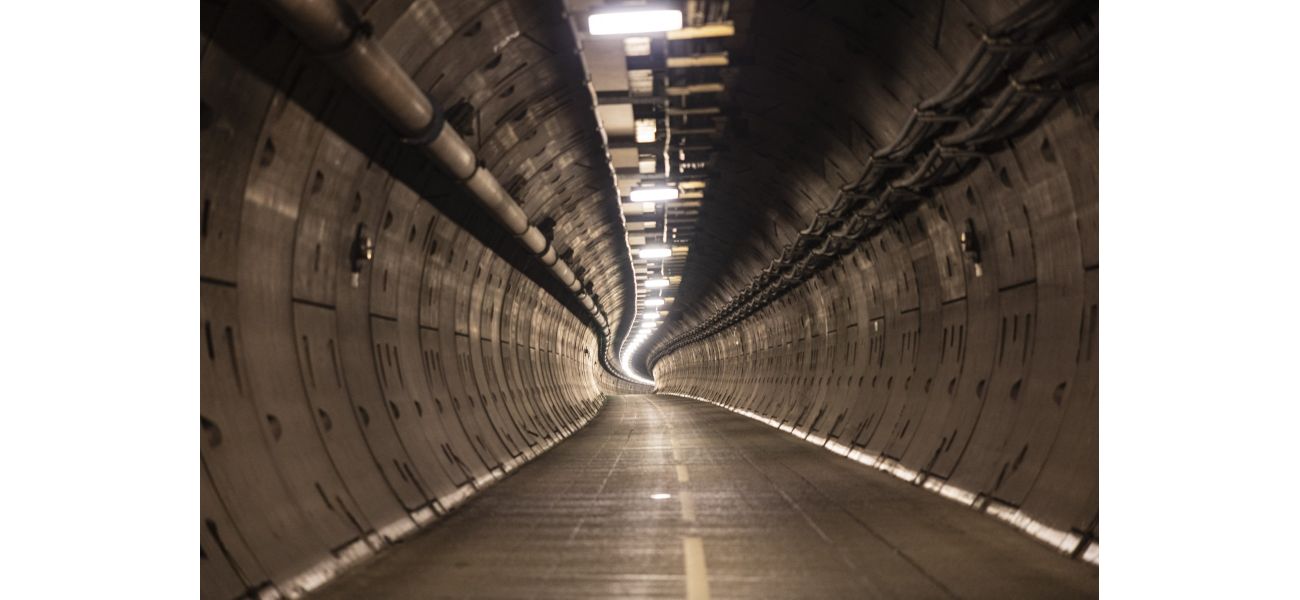A potential £15 trillion tunnel could connect New York and London in the near future.
A long-held idea, now proposed, was previously deemed impossible due to its cost and size.
December 10th 2024.

Close your eyes and imagine a world where the Channel Tunnel is on steroids, where the possibilities of travel seem endless. A world where you can hop on a train in London and arrive in New York City in just one hour. This may seem like a mere fever dream, but it could soon become a reality with the recent online resurfacing of plans for a 3,000 mile trans-Atlantic train tunnel connecting the two cities.
The idea itself is not new, but it was once deemed impossible due to its immense length and the astronomical cost of construction. However, with advancements in technology, such as vacuum tube technologies and pressurized vehicles, this seemingly impossible project may eventually come to fruition, albeit with a hefty price tag. In fact, estimates for the construction costs of the underwater tunnel have reached an astonishing £15 trillion.
If this ambitious project were to move forward, it would revolutionize travel as we know it. Imagine being able to travel from one continent to another in less than an hour. Not only would it save time, but it could also be more environmentally friendly, reducing the heavy air pollution caused by air travel. The proposed trains would travel through pressurized train tunnels, allowing them to reach speeds of up to 3,000mph with no wind resistance. This technology is similar to that of superloop trains, which have been trialed by Swiss engineers and hailed as the future of travel.
However, developing hyperloop technology has not been without its challenges. Previous attempts by various providers have failed due to obstacles such as maintaining the vacuum system, capsule propulsion systems, scalability, safety, and economic viability. But with determination and perseverance, these challenges may one day be overcome, paving the way for a new era of travel.
The Channel Tunnel, which currently links the UK and France, is a comparable structure to the proposed underwater train tunnels. However, the Channel Tunnel is much less high-tech and only reaches a depth of 245 feet below the surface. In contrast, the trans-Atlantic train could potentially go much deeper, with some engineers even suggesting building it beneath the thick ocean floor or suspending it with cables or stilts.
Interestingly, the idea of underwater tunnels has been around for centuries. In 1802, French mining engineer Albert Mathieu-Favier proposed a tunnel between France and England, even mentioning the concept of an artificial island between the channels for changing horses. However, the Channel Tunnel, or Chunnel as it is commonly known, is not pressurized like the proposed trans-Atlantic train tunnel and actually allows water to leak in before pumping it away.
In the bustling city of London, where the latest news is always a hot topic, the possibility of this trans-Atlantic train tunnel has sparked much excitement. And with the ongoing chaos on the London Underground and the recent charge of murder against a man who killed a father-of-three, a new and efficient mode of transportation is more welcomed than ever. Who knows, maybe one day we'll be able to hop on a train in London and arrive in New York City for a quick weekend getaway. The possibilities are endless. Stay updated on all the latest news in London by visiting Metro's London news hub. After all, who wouldn't want to be in the know about the latest developments in this incredible city?
The idea itself is not new, but it was once deemed impossible due to its immense length and the astronomical cost of construction. However, with advancements in technology, such as vacuum tube technologies and pressurized vehicles, this seemingly impossible project may eventually come to fruition, albeit with a hefty price tag. In fact, estimates for the construction costs of the underwater tunnel have reached an astonishing £15 trillion.
If this ambitious project were to move forward, it would revolutionize travel as we know it. Imagine being able to travel from one continent to another in less than an hour. Not only would it save time, but it could also be more environmentally friendly, reducing the heavy air pollution caused by air travel. The proposed trains would travel through pressurized train tunnels, allowing them to reach speeds of up to 3,000mph with no wind resistance. This technology is similar to that of superloop trains, which have been trialed by Swiss engineers and hailed as the future of travel.
However, developing hyperloop technology has not been without its challenges. Previous attempts by various providers have failed due to obstacles such as maintaining the vacuum system, capsule propulsion systems, scalability, safety, and economic viability. But with determination and perseverance, these challenges may one day be overcome, paving the way for a new era of travel.
The Channel Tunnel, which currently links the UK and France, is a comparable structure to the proposed underwater train tunnels. However, the Channel Tunnel is much less high-tech and only reaches a depth of 245 feet below the surface. In contrast, the trans-Atlantic train could potentially go much deeper, with some engineers even suggesting building it beneath the thick ocean floor or suspending it with cables or stilts.
Interestingly, the idea of underwater tunnels has been around for centuries. In 1802, French mining engineer Albert Mathieu-Favier proposed a tunnel between France and England, even mentioning the concept of an artificial island between the channels for changing horses. However, the Channel Tunnel, or Chunnel as it is commonly known, is not pressurized like the proposed trans-Atlantic train tunnel and actually allows water to leak in before pumping it away.
In the bustling city of London, where the latest news is always a hot topic, the possibility of this trans-Atlantic train tunnel has sparked much excitement. And with the ongoing chaos on the London Underground and the recent charge of murder against a man who killed a father-of-three, a new and efficient mode of transportation is more welcomed than ever. Who knows, maybe one day we'll be able to hop on a train in London and arrive in New York City for a quick weekend getaway. The possibilities are endless. Stay updated on all the latest news in London by visiting Metro's London news hub. After all, who wouldn't want to be in the know about the latest developments in this incredible city?
[This article has been trending online recently and has been generated with AI. Your feed is customized.]
[Generative AI is experimental.]
0
0
Submit Comment





